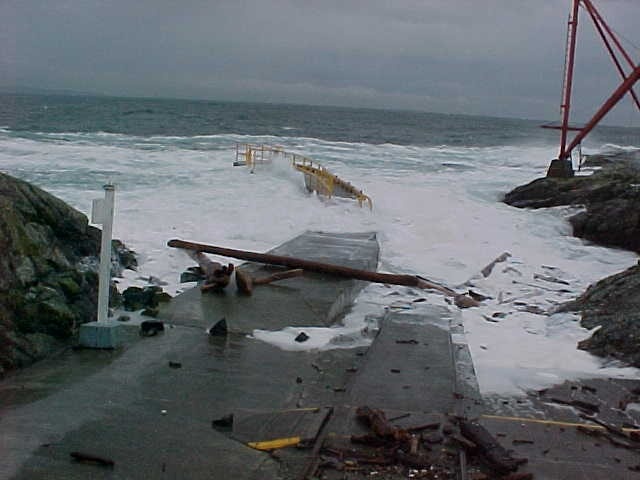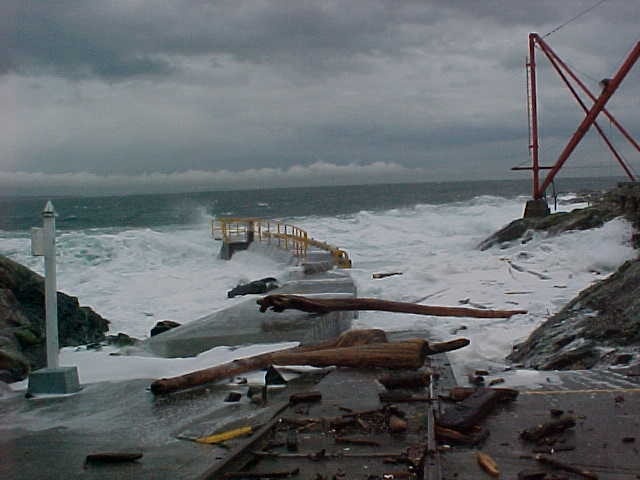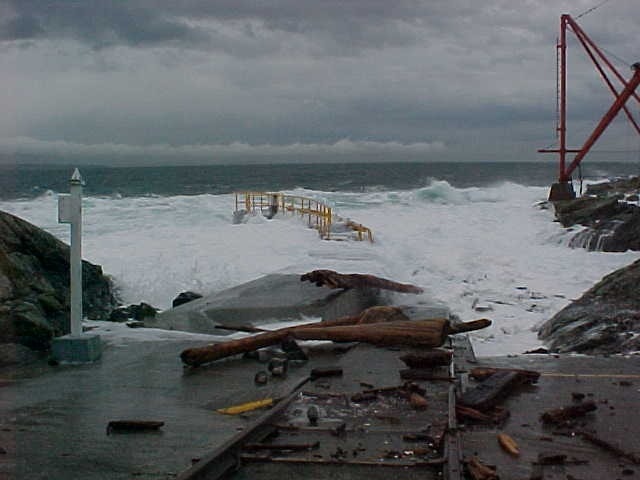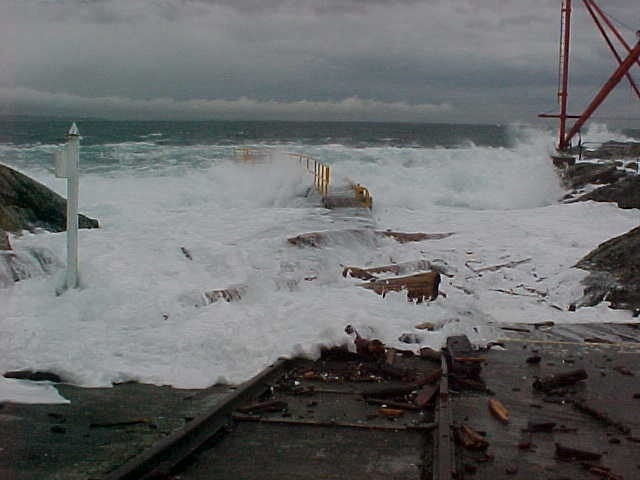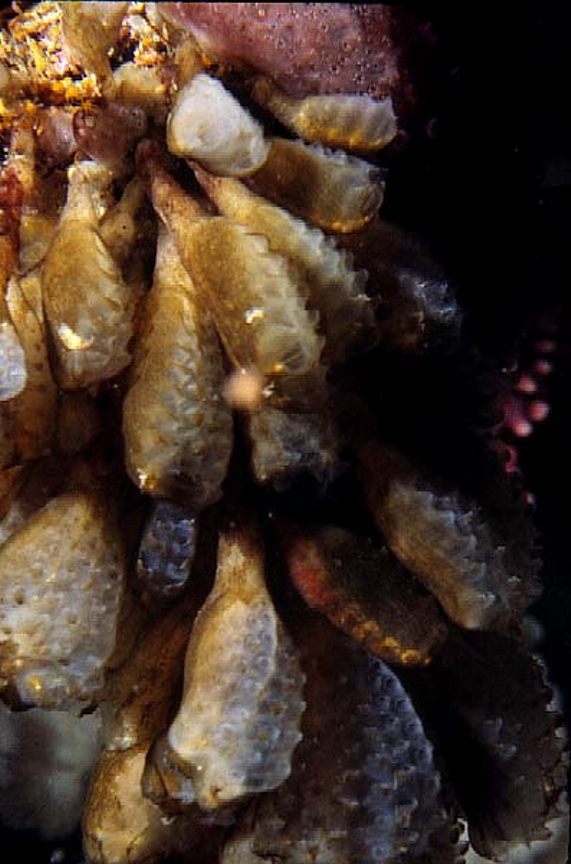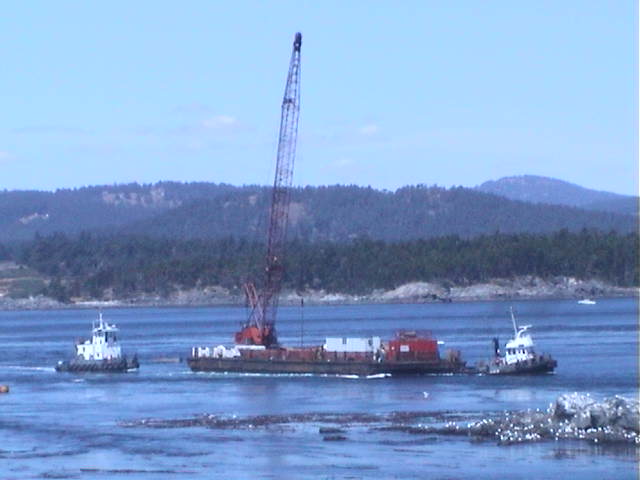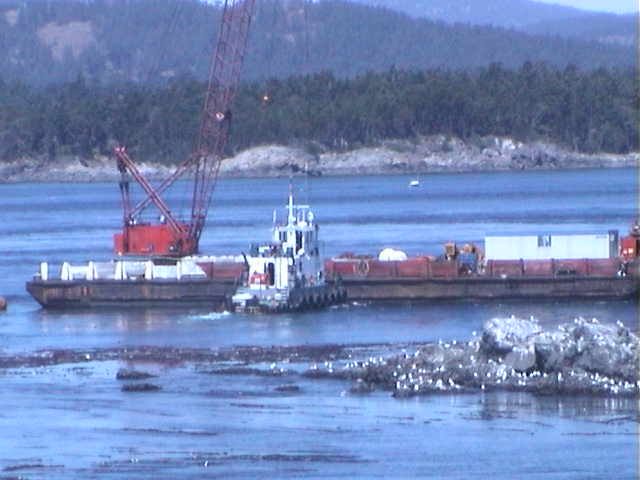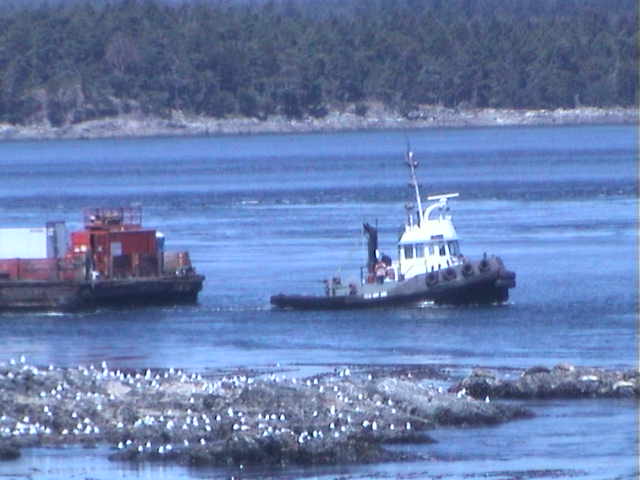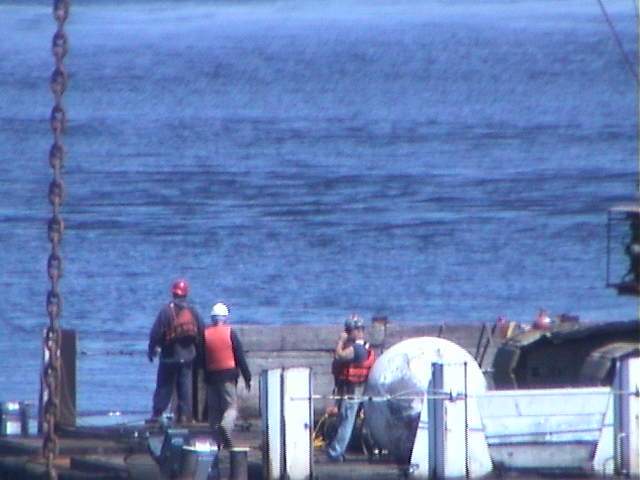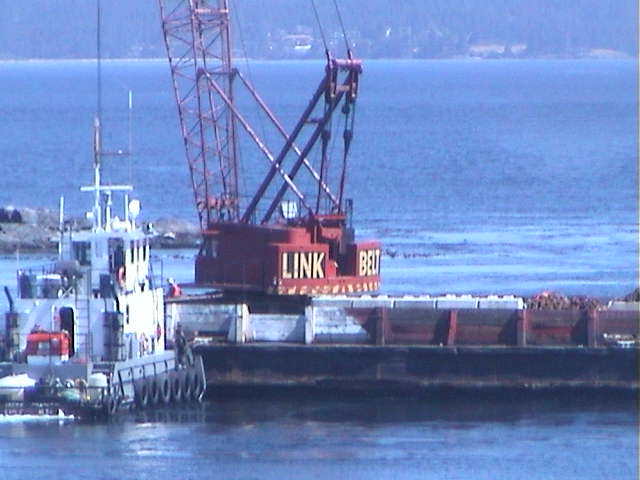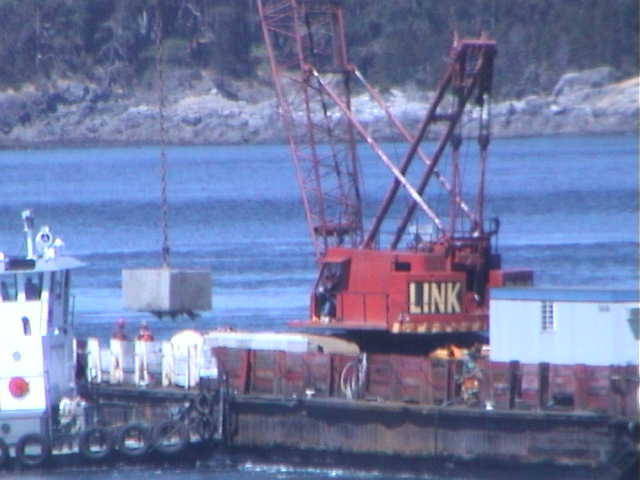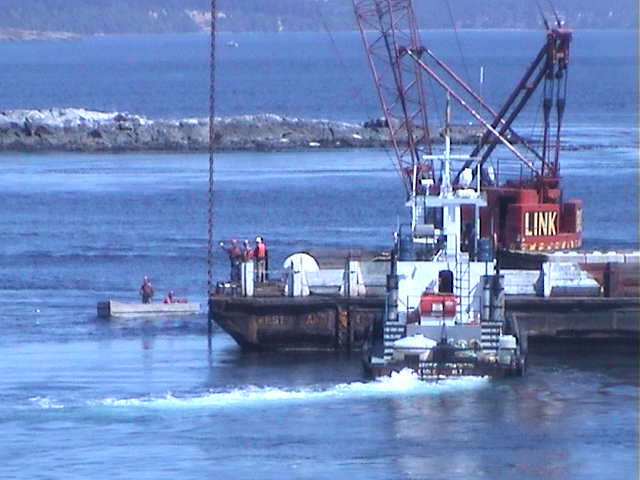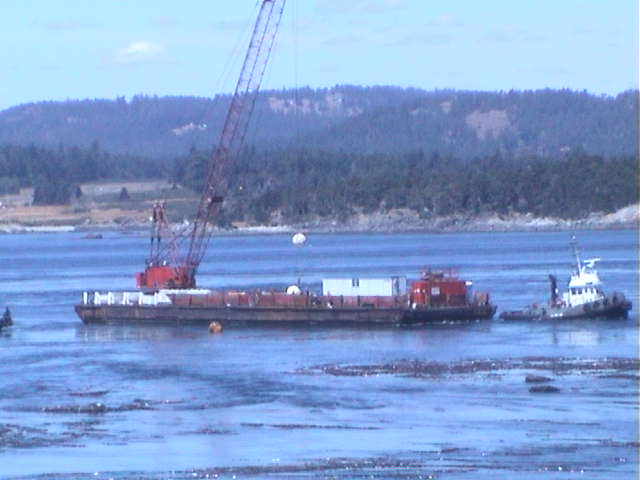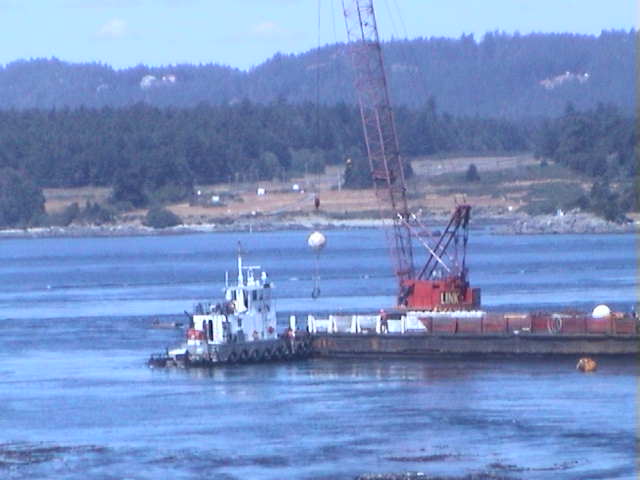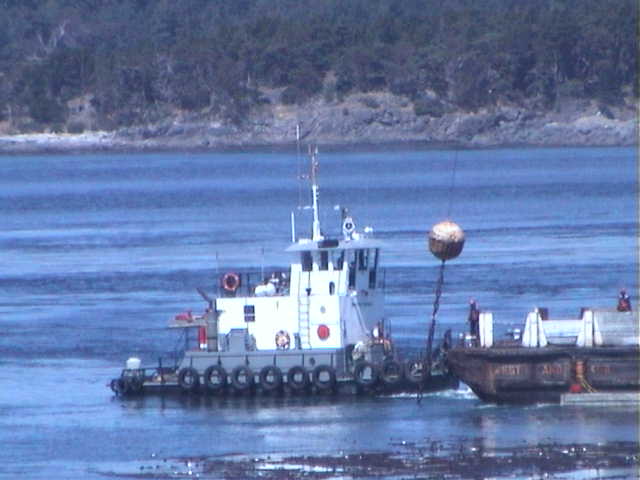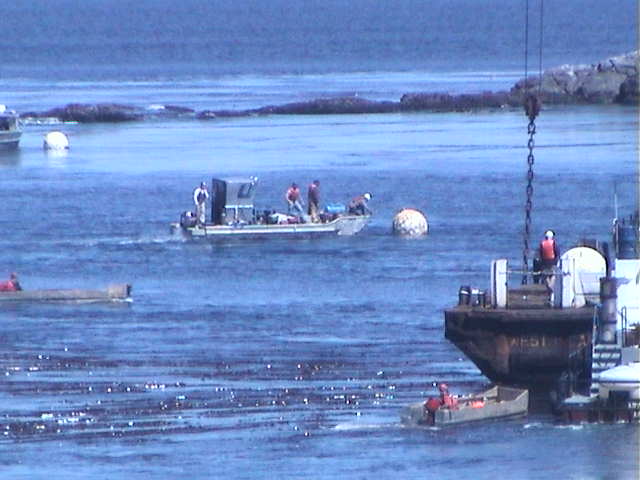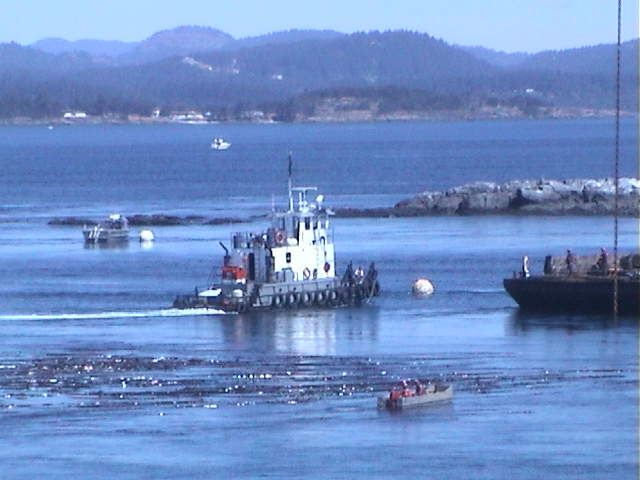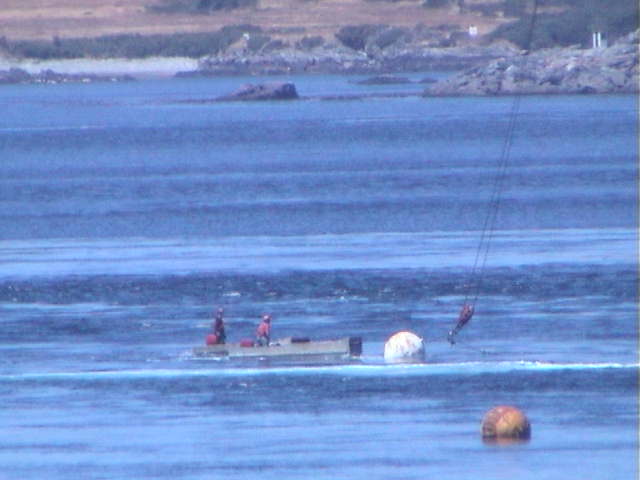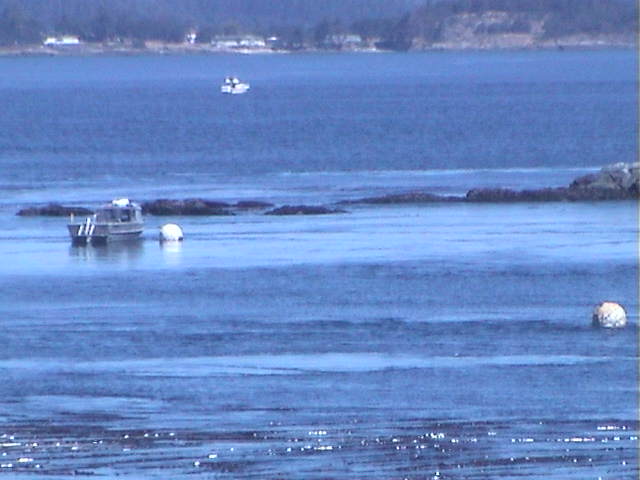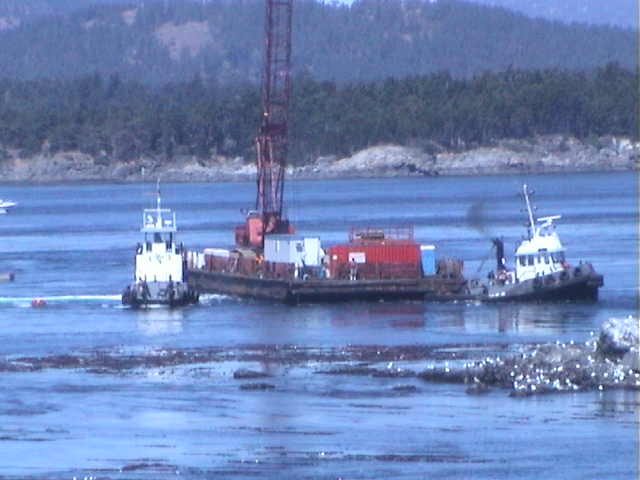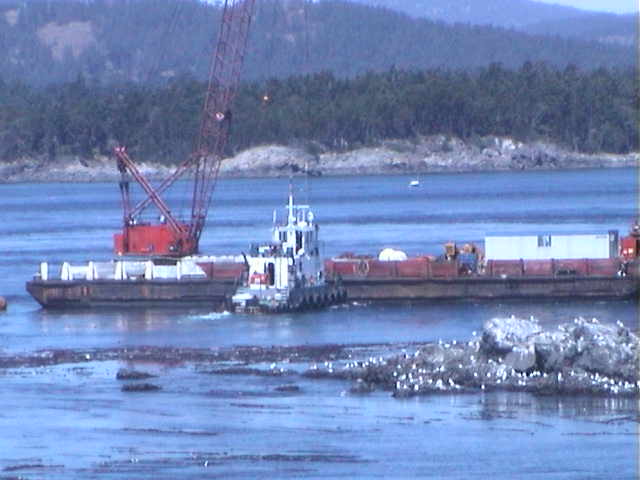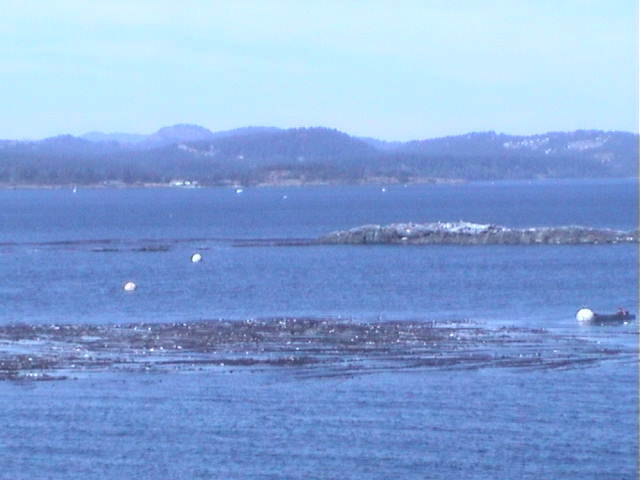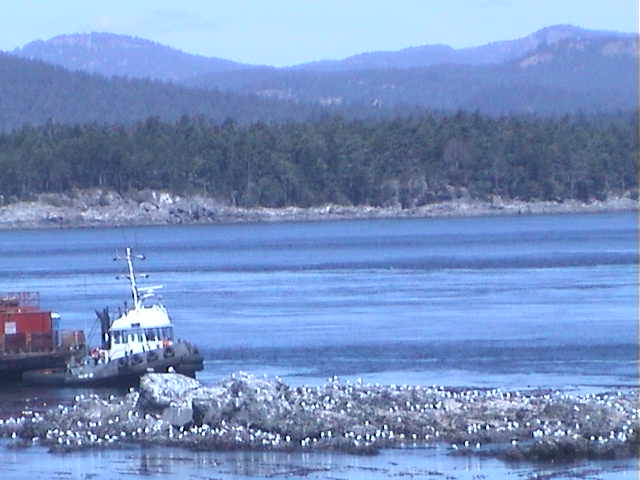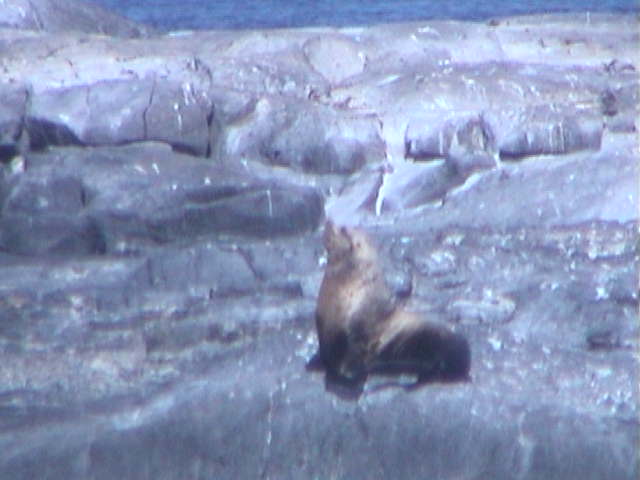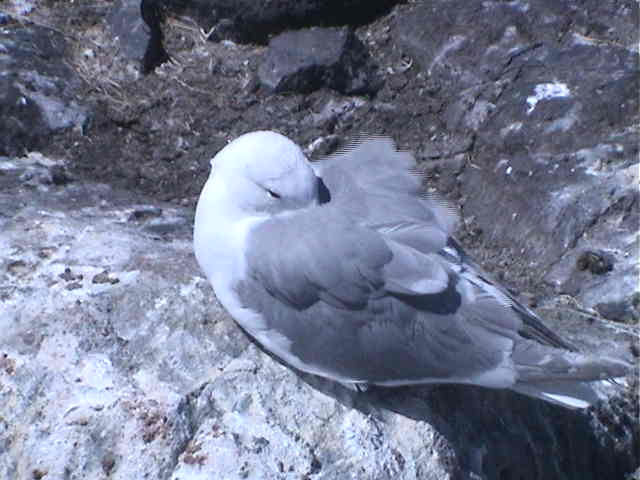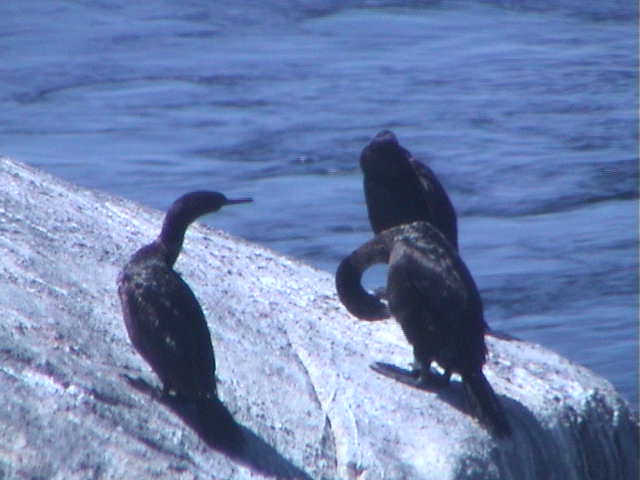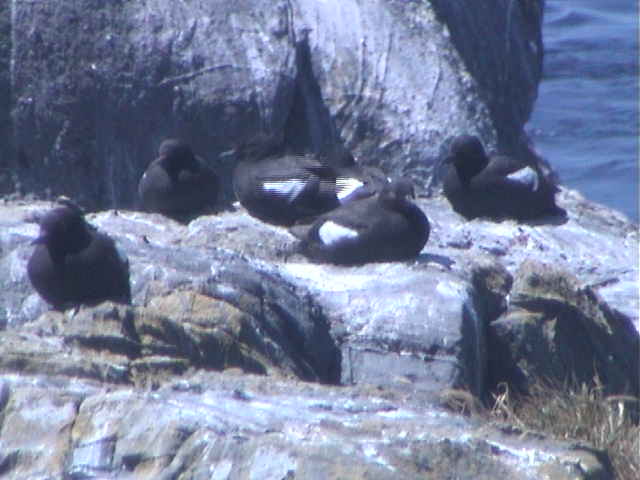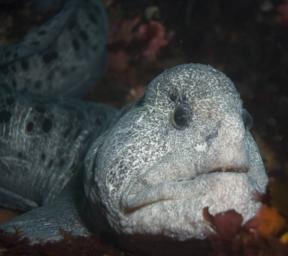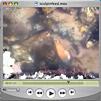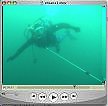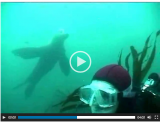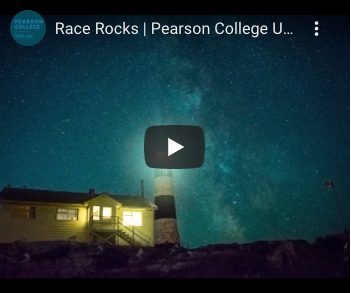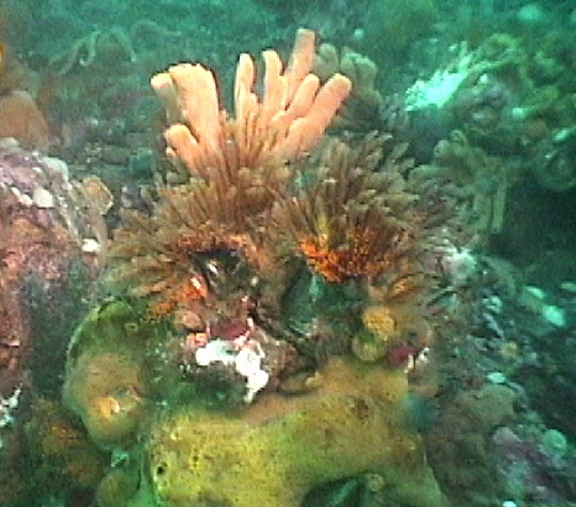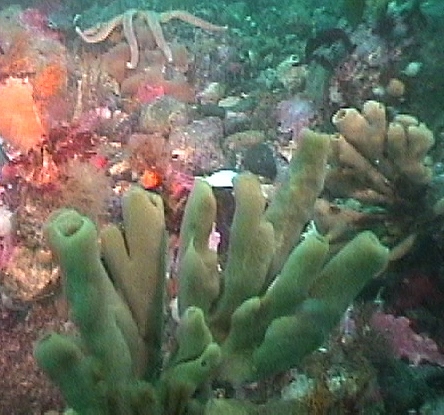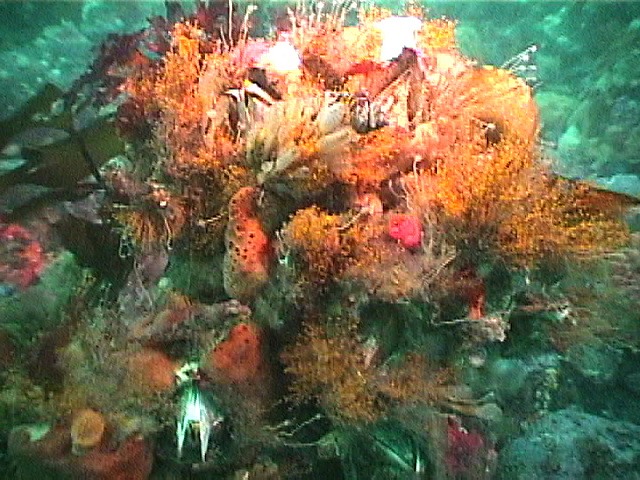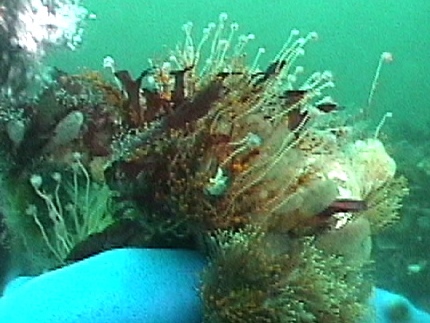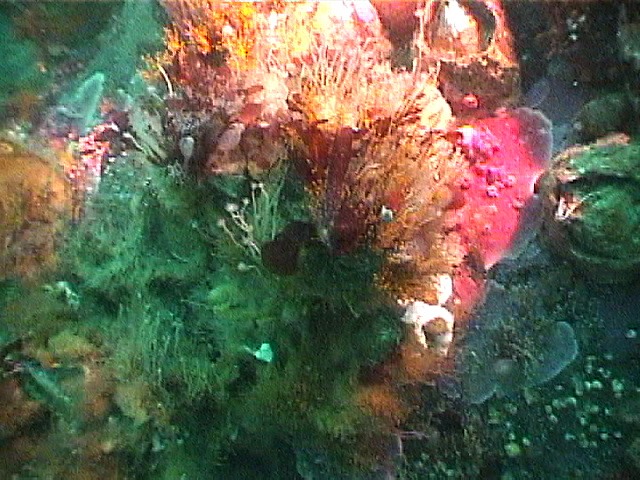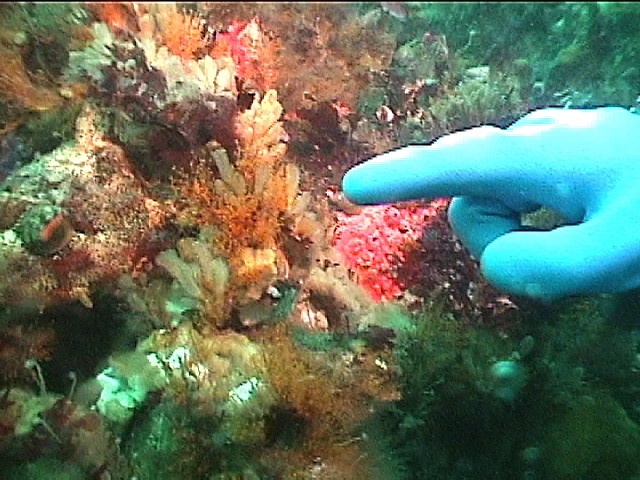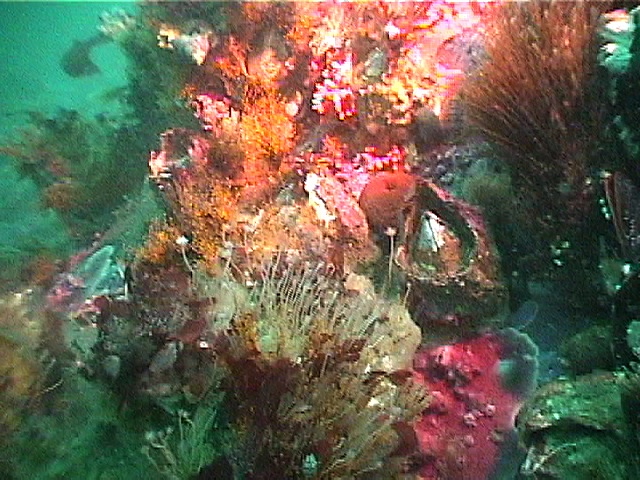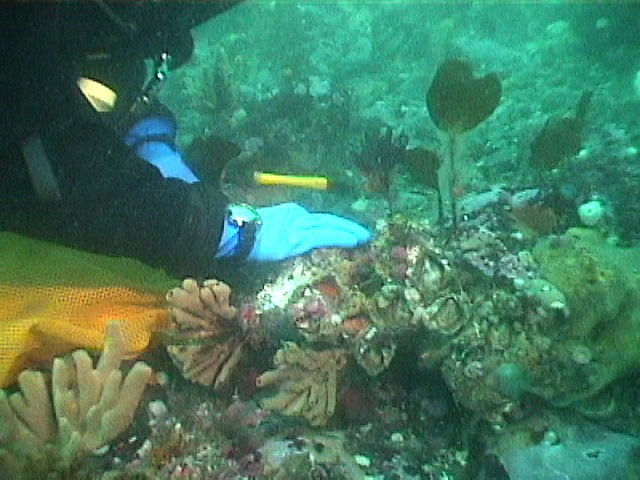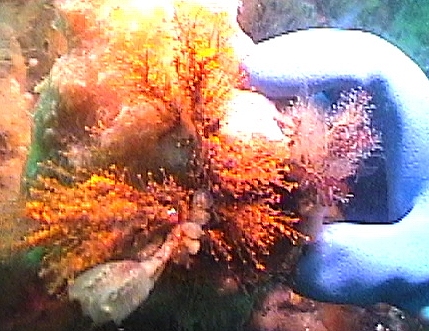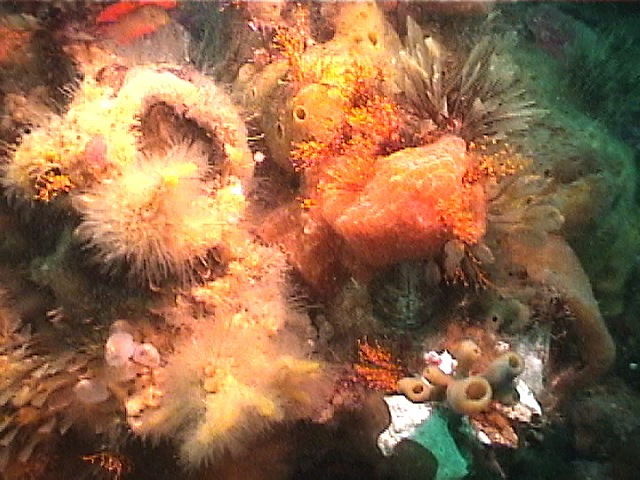This video is a compressed version of the one produced by Brainstorm for the Tidal Current Power Project. It documents the partners and the process along the way in the establishment of the Turbine Project . (released January 19, 2007 to correspond with the visit of Prime Minister Stephen Harper to Lester Pearson College and Race Rocks. )
Category Archives: Archived Video
The Tidal Current Energy Project at Race Rocks
This video is a compressed version of the one produced by Brainstorm for the Tidal Current Power Project. It documents the partners and the process along the way in the establishment of the Turbine Project . (released January 19, 2007 to correspond with the visit of Prime Minister Stephen Harper to Lester Pearson College and Race Rocks.)
Wind at Race Rocks
This video was taken with the remote camera 5 on Dec 11, 2006, a day which can be represented by the images of the atmospheric factors below. Note the wind speed was over 40 knots in the afternoon. The extreme pressure drop on the barometric graph was a good indicator that a big wind was coming.
It certainly can be seen as a wild mixture of weather for the day.
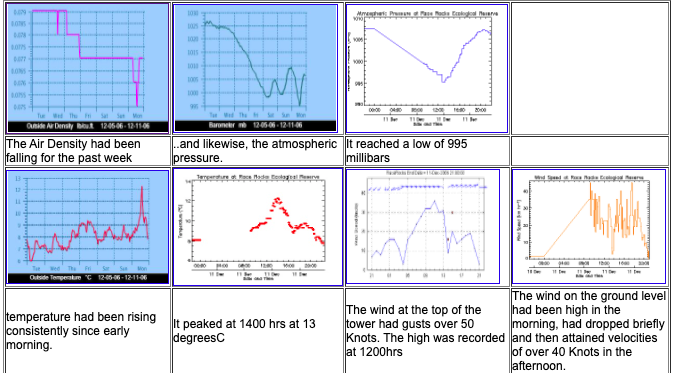
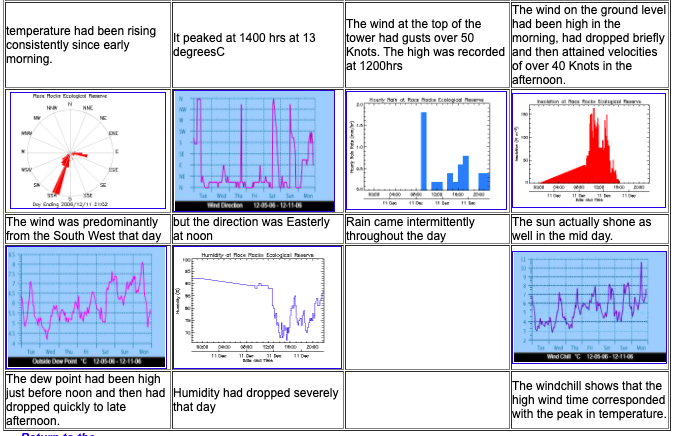
- The docks at the peak of the storm
- photos by Mike and Carol Slater
Distaplia smithi
This video was taken in the lab:
A general view of the habitat of this ascidian in the high current area near the tidal current turbine.
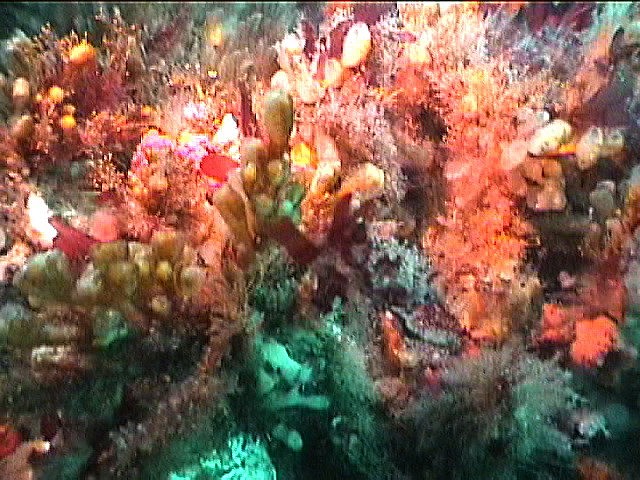
A general view of the habitat of this ascidian in the high current area near the tidal current turbine.
Domain Eukarya
Kingdom Animalia
Sub-Phylum Urochordata
Class Ascidiacea
Order Enterogona
sub order Aplousobranchia
Family Claveliidae
Genus Distaplia
Species smithi
Common Name:Club Tunicate
II took this picture the first time I encountered this ascidian when diving at Race Rocks. I had no idea what kind of organism it was at the time .. I referred to it as a grape ascidian .. GF
| Other Members of the subphylum Urochordata at Race Rocks |
and Image File |
 The Race Rocks taxonomy is a collaborative venture originally started with the Biology and Environmental Systems students of Lester Pearson College UWC. It now also has contributions added by Faculty, Staff, Volunteers and Observers on the remote control webcams. The Race Rocks taxonomy is a collaborative venture originally started with the Biology and Environmental Systems students of Lester Pearson College UWC. It now also has contributions added by Faculty, Staff, Volunteers and Observers on the remote control webcams.
October 2006- Garry Fletcher |
Installation of the Anchors for the Tidal Current Turbine Project
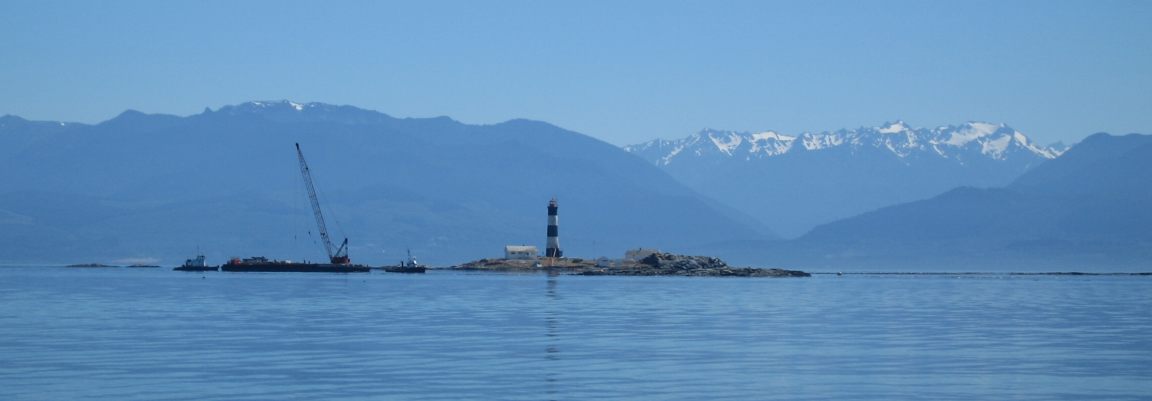
On July 16, 2006 the barge was moved on site for the installation of the piling. The first stage was the deployment of anchors for the positioning of the drilling barge. I captured the following pictures from the remote Camera 5.
- Early Sunday morning they barge leaves Vancouver and arrives to be placed in position to deploy the anchors
- The tide is running at several knots today.
- So stabilization is accomplished by the two tugboats.
- Crew on board the barge
- Concrete block anchors on deck.
- The crane lifts an anchor block and when the barge is positioned at predetermined locations..
- block is lowered to the seabed
- Next a large buoy is raised from the deck –
- swings to the rear of the barge
- and lowers it to the surface.
- detach the crane line from the buoy
- atcher boat is used to
- Several buoys are already in place. Second Nature stands by in the background.
- ccxccc
- Location of three of the Buoys installed on the East sideof the channel
- A large flock of gulls was on the middle island during the operation
- Normally at this time of year there are no sea lions present. This one turned up today.
- The gulls….
- and cormorants …
- and pigeon guillemots are not disturbed on the nesting grounds of Great Race Rocks.
On July 18, 2006 Chris Blondeau and Mike Cameron dived on the west centre anchor blocks and took video of the blocks and chains and some of the effects on surrounding organisms. They also navigated on the same dive to the dredged site as well and we see the excavation and the pile of dredged materials in this video.
Archive video: Fish Species of Race Rocks
Archived Video : Pearson College Diving Activity at Race Rocks
Underwater Webcasts by the Divers
The Underwater Environmental Data Sensor Bar.
 |
 |
kjkjkjkjk |
| In December 2000, the students and faculty of Pearson College install the first of the underwater environmental data sensors | Fouling -or succession– depends on how you look at it. |
Underwater Work for the Tidal Energy Project
 |
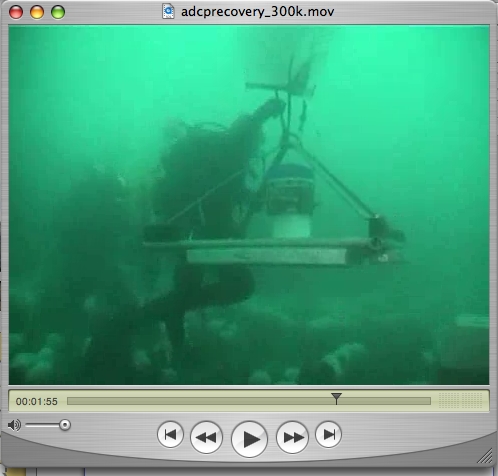 |
 |
 |
| ADCP deployment for the Tidal Power Project | Deployment and Retrieval of the ADCP from the Bottom of the Channel | Succession Study of coatings and materials | Chris Blondeau and Juan Carlos video the substrate at the site of the piling installation, and test the depth of the overburden. |
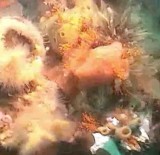 |
 |
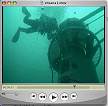 |
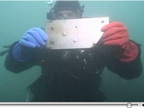 |
| Turbine site hydroid survey by Chris Blondeau and Juan Carlos Yabar, 2006
|
Pam and Jason from Archipelago Marine do their underwater survey of the location of the Piling Drilling for the Current Energy Project. | Video on the Pearson College, EnCana, Clean Current Tidal Power Demonstration Project at Race Rocks
|
In December of 2007,The Pearson College Divers installed a set of junction boxes as part of a materials testing experiment for the tidal energy project. |
Archives: Videos of Science and Education at Race Rocks.
The students of Lester Pearson College are frequently taken to Race Rocks for educational field labs. Pearson College has, since automation in 1997, paid for the staffing and upkeep of the island. These videos portray some of the exercises that are done throughout the year on the island. The college biology and environmental systems classes, students on special projects, and outside researchers make extensive use of the facilities. In addition several videos portray the physical factors that help to make Race Rocks an unusual ecosystem.
Facilities on the Island and the MPA.
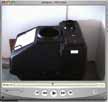 |
 |
 |
|
| Installation of Composting Toilets at Race Rocks | The future of alternate energy at Race Rocks. Interview with Taco Niet, Masters student at the University of Victoria (June 2001) |
Race Rocks is officially declared a Marine Protected Area by Canada’s Ocean’s Minister Herb Dhaliwal and British Columbia’s Environment Minister Joan Sawicki. Also see the MPA day File. |
Underwater Research
at Race Rocks
 |
 |
 |
 |
| Abalone tagging at Race Rocks with Pearson College graduate Jim Palardy | A dive with Dr. Scott Wallace for the Discovery Channel, May 7, 2000 |
Alberto Lindner of Brazil visits Race Rocks for research on the Hydrocoral Allopora | Dr. Gitai Yahel and research on Ecology of Suspension Feeders |
Physical Factors and their Effects on Race Rocks
 |
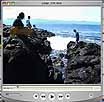 |
 |
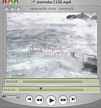 |
| Tidal Level Variation at Race Rocks | Surge Channel and Surge as an Abiotic Factor | The Flood Current at Race Rocks | Wind Storm at Race Rocks |
Archived Video on History of Race Rocks.

|
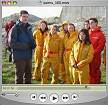
|
|
| Demolition at Race Rocks: Shows the stone building originally built at the base of the tower and the wooden foghorn tower. Both removed in the ’60’s and 70’s. See this file on the foghorns. | Darcy Mathews explains his research on Burial Cairns at Race Rocks to the Anthroplogy students from Pearson College. |
Rusted parts of the old boiler from the engine room are carried up to a
collection of other old parts stored at the base of the tower.
Video of Substrate at Tidal Current Energy Site
Chris Blondeau and Juan Carlos do another video of the substrate at the site of the piling installation prior to the pile drilling operation for the Tidal Current Energy Project. They document some of the species of hydroid, colonial ascidian and sponges which grow on the giant barnacles in the area. March 29, 2006.
Note: The video pauses on each clump in order to have a better view.
- Sponges on barnacle
- Sponge
- Sculpin with barnacles
- Closeup of mixed hydroids
- Balanus Nubilus and hydroids
- Hydroids
- Tubularia sp. hydroids and Balanus n.
- several sponge clumps
- Club Tunicate with hydroid Garveia
- sponges and hydroids

